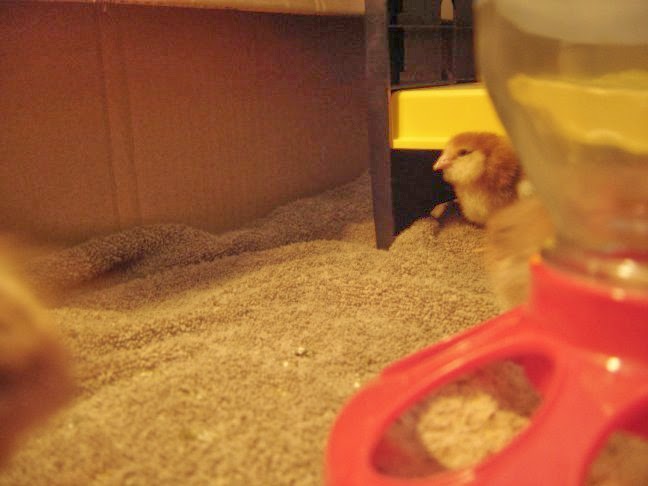Last Summer, we attempted to start producing our own meal worms. It was an epic failure because we had purchased (we think anyways) hormone treated "extra large" meal worms from the local pet store. Later, we read that the giant worms are made that way with with a growth hormone that causes the resulting beetles to be sterile (non-fertile). So we ultimately threw out the dead beetles and started over. We had not fed any of these worms to our chickens.
August, we purchased a small container of "small" meal worms and tried again. By November, the beetles were practically swarming the container. For two months, we watched the beetles mating and burrowing through the "food" but never saw any baby worms hatching out.... Back to the drawing board. We thought we had again purchased sterile worms. I finally found a website that explained that the beetles, if left un-attended in the main container, will eat all the worms as they are starting to grow as well as any pupae.
The end of December, I pulled out all the beetles in the container and fed them "LIVE" to the chickens. We were careful to make certain that none "escaped." (There is more about the potential issues of these beetles infesting a chicken coop, later in this post.) I had hoped that we would have enough eggs left over in the container to keep going. Literally, we ended up with 7 worms left from the beetles' feeding frenzy. By the end of February, the larvae grew up, morphed into pupae and then into beetles.
As soon as the light golden brown beetles started to turn up in the container, I pulled them out and, one by one, put them into a small "deli soup container" and let them breed. I had poked small holes into the lid of the container, put a handful of wheat bran, two handfuls of steel-cut oats into the bowl with the beetles, along with a small piece of paper towel and a small fresh piece of cut carrot on top of the oatmeal.
Here's what I learned. The paper towel will absorb some of the moisture from the cut carrot but as the carrot shrivels up the paper towel will stay moist for a few more days. Under that paper towel is where the majority of the tiny worms will gravitate. I put in fresh paper towel and carrot slices twice a week. Also with the paper towel and twice weekly change out of carrot helps prevent mold and mildew from forming in the oatmeal while keeping some moisture in the container for the various stages of the worms.
Put four to six beetles into a small container with wheat bran, old-fashioned or steel-cut oats and the small carrot on the small piece of paper towel, and let them go at it for a week or so. Take the beetles out of the container (I put them in a small jar) and dump the contents of that small container into a larger container with more oats and bran to allow the eggs to hatch and continue the cycle. Personally, I recommend killing the beetles after what I read about the potential of them infesting places. It sounds like they can spread diseases if allowed to "run free" and there are some articles about chicken farms in the south that have had real issues with Darkling Beetle.
Read more about these infestation issues at this University of Georgia page.While I don't literally smash the beetles, I put them into a jar in my freezer and throw them away after a day. When I feed live meal worms to my chickens, I watch to make certain that all the worms are consumed. (That would be hard to do if we had a large-scale operation.) Using a slick sided bowl makes it harder for the worms to escape before being consumed. But, you can
freeze and dry the worms for use, also, which will prevent any chance of an infestation.
Also, I learned NOT to purchase "mature" or large or giant meal worms from the pet store; not that I will need to purchase any more, at this rate.
I discovered that if I keep the beetles separated from the grubs, I have better meal worm output. The meal worms develop better/faster in a humid environment, so I decided to keep them in my laundry room. While I have not had any problems with mold/mildew in the container, I found out that if that occurs, it's a lot of work to clean out the container in order to save the grubs. Also, when the larvae pupate, you can gently take the pupae out and put them into separate areas, like a small plastic box with many sections so that, as they change into beetles, the remaining pupae do not get eaten by the new beetles. Also, you will need to dig through the food/substrate to look for pupae and/or beetles. It's amazing how quickly they can develop in the right conditions.
The larger grubs are just a treat that our chickens LOVE. This is
not intended to be their main meal. I can also put out worms for
wild birds and, if necessary, I can probably give them away to wild bird
enthusiasts if I end up with too many meal worms.
When
I grow my own meal worms, I know that the grubs have eaten. I know that
the beetles are in a clean space, that the larvae are clean and that my
birds are less likely to be infected with anything because, from start
to finish, the meal worms were raised in a clean environment.





